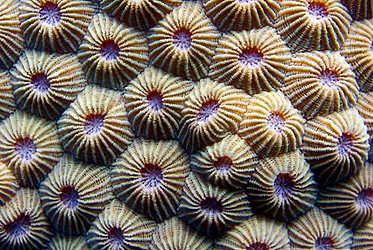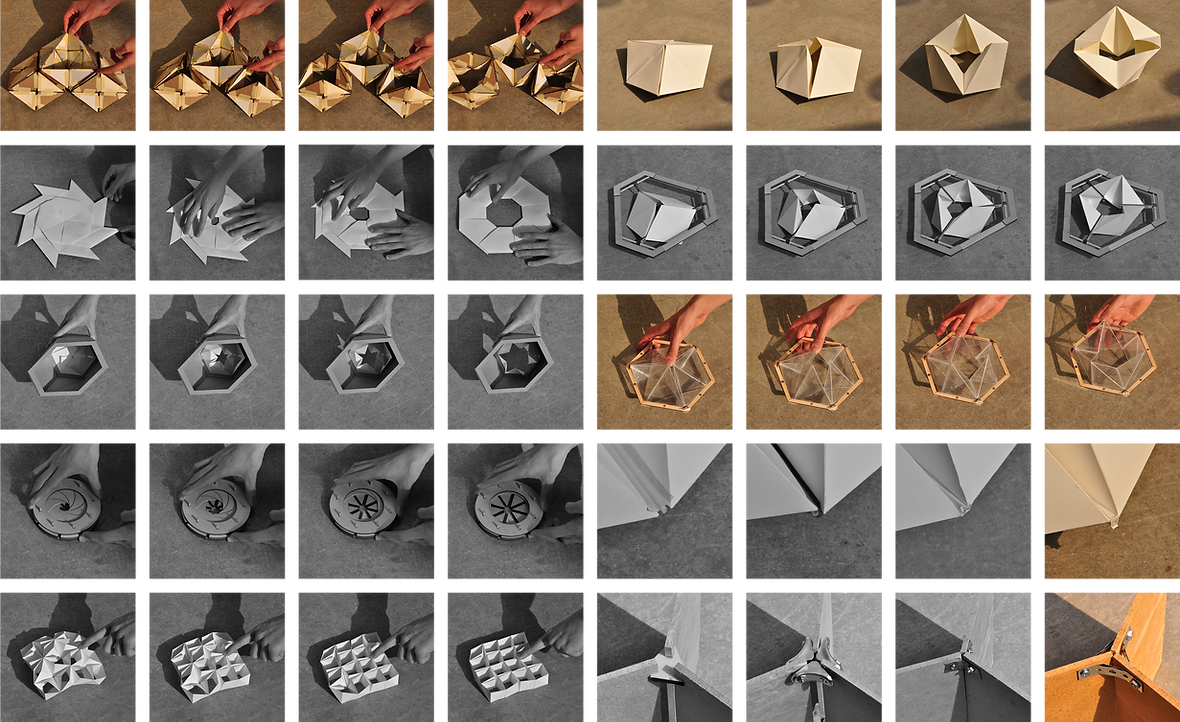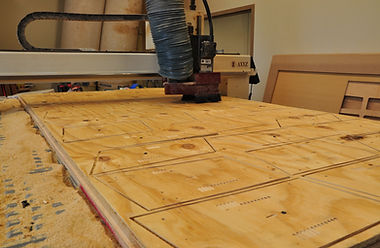
Biomimicry Design + Build
This project is the result of an independent studio devised by myself and a studio colleague Going into our final semester at ISU, we weren’t satisfied with the option studios available for enrollment, and we sought out a studio that could expand on our interests in parametric design and design build delivery. With the support of Associate Professor Kris Nelson, we created a full studio proposal including course structure, schedule, and example content that was approved by ISU administration as an independent studio. Once approved, we recruited 2 additional team members that rounded out the team’s set of physical and digital skills. Together the team created an independent studio project that would leverage biomimicry and parametric architecture to passively respond to environmental stimuli. Through the research of biomimetic functions, adaptable forms were developed by the use of parametric modeling. In a proof of concept, an inhabitable prototype was built to test the system at full scale.
Kicking off the project, the team went through a discovery process, drawing inspiration from different natural forms and processes. After this initial period of biological research and conceptual development, the team divided into 2 groups, one focused on the responsive apertures and the other on parametric structure. This division was determined by personal interest and by the team member’s familiarity with Grasshopper scripting. This division of responsibility provided focus to production, but by no means did the work stay siloed. The design process was collaborative as advances by each side informed the other’s process. This back and forth led to the final decision to create a regular hexagonal structure with uniform triangulated apertures.
Taking these final design forms, the team acquired readily available materials to assemble the structure and apertures. 4’ x 8’ plywood sheets served as the base material for the vaulted structure. Each extruded hexagonal cell wall was a uniquely cut plywood panel first scripted in Grasshopper and Rhino 3d with a specific ordering sequence for assembly with adjacent cell panels. Panels were held together by pieces of duct hangers with nuts and bolts that also received aperture joint connectors made out of t-pins and straws. Apertures were assembled with laser cut paper sections that were partially weather treated for better outdoor performance. Once partially assembled off site, the team installed the structure with apertures at the Reiman Gardens for a Mother’s Day installation.
While the team successfully met the studio goal of constructing a passively responsive structure at full scale, the process involved setbacks. These were valuable failures inherent with an iterative process of designing and testing. And while this wasn’t part of the original goals set out for the studio, constructive failure was the most significant take away for the team’s members.
This studio and its process ultimately became the foundation for the inFORM studio which was offered as a full option studio at ISU the following year. For this new course, I acted as a volunteer lecturer and aided Professor Kris Nelson in the development of the studio’s coursework and instructed part time.
Coral Polyps
These secrete hard carbonate exoskeletons which support and protect their bodies. The resulting geometry of a single polyps is dependent upon the shape of the adjacent polyps. A geometric precedent.
Stomata
A pore, found in the epidermis of leaves, stems, and other organs used to control gas exchange. Carbon dioxide enters the plant through these openings and is used in photosynthesis.
Acorn Barnacles
These are encrusters; they attach themselves permanently to hard substrates within their environment. Their calcite shells are impermeable, and they possess two plates, which they can slide across their aperture when not feeding.





Reduce Structure Depth at Top
+ smaller self weight
+ vertical angle does not require large depth for shading
Taper Structure Base
+ better at distributing compression load
+ increased surface area for ground plan connection
Reduction in Aperture Locations
+ retain majority of cells on south side of structure for solar orientation and sites prevailing winds coming from the south
Soften Edge
+ reduces tunnel effect but is still occupiable
+ reduces construction time, output, and cost
Triangulated Plan
+ provides greater orientation opportunities along outdoor paths such as intersections rather than mid-points only
Centralized Attractor Point
+ if apertures are not installed or if winds are low, a panoramic like view is possible from center of structure









.jpg)